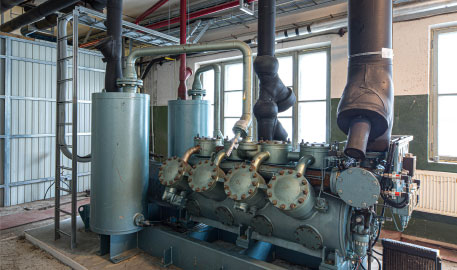
Common Cold Room Faults and How to Detect Them | Inspection Tips for Your Cold Room!
The best way to ensure your cold room is running as effectively as possible is to design for purpose and efficiency from the get-go. However, this is not often simple or affordable for many industries, especially when existing equipment is being repurposed. In this case, the ability to detect then correct any inefficiency and faults before they become failures is key. If these faults are left unfixed, they will likely waste energy and cost more!
This article provides examples of common faults, how they are detectable, and possible solutions for correcting them.
There are three standard methods for detecting possible issues:
- Walkthrough Visual Inspection
- Service Technician Inspection/Routine Maintenance
- Monitoring with Smart Meters
Monitoring the energy use of your cold room assists with ensuring the system is running optimally. It also reduces risk via early fault detection as a preventative maintenance benefit.
While service calls flag certain issues, investigations from Sustainability Victoria found that around 70% of faults are not noticed or undetectable during visual and service inspections. For this reason, smart metering and monitoring will allow you to diagnose these faults.
Common Faults and Inefficiencies and How to Address Them
-
Dirty Condenser and Evaporator Coils:
This fault can be visually detected as dirt, dust, and/or other contaminants on the outside of these fans. This issue results in decreased heat transfer capacity for the system, as well as performance losses and an increase in the required work. This additional work consequently lowers the life of the system.
This cleaning should be performed by a service technician as part of routine maintenance.
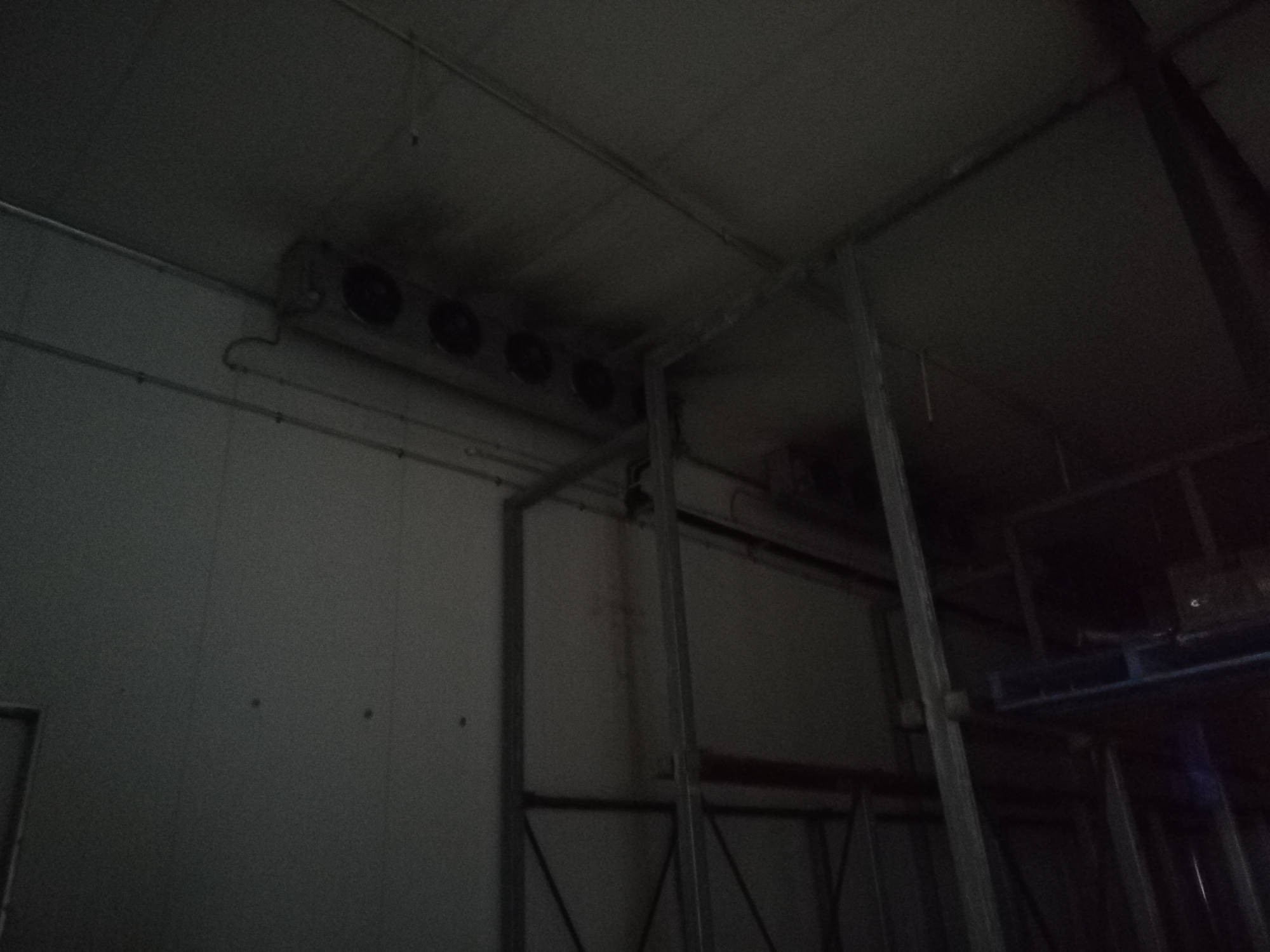
Visible build-up of contaminants on ceiling, unit requires cleaning
-
Incorrect or Missing Insulation:
This fault can be visually detected by inspecting the pipe work of the refrigeration units.
In general, any insulation is preferable over no insulation. This is particularly the case for refrigeration lines. The most commonly used insulation is the black nitrile foam style. However, this type of insulation is susceptible to failure with prolonged UV exposure. It is acceptable for pipework and other equipment that is undercover and protected from direct sunlight. However, for areas exposed to sunlight, this insulation needs to be covered. This may come in the form of an insulation jacket or external cladding.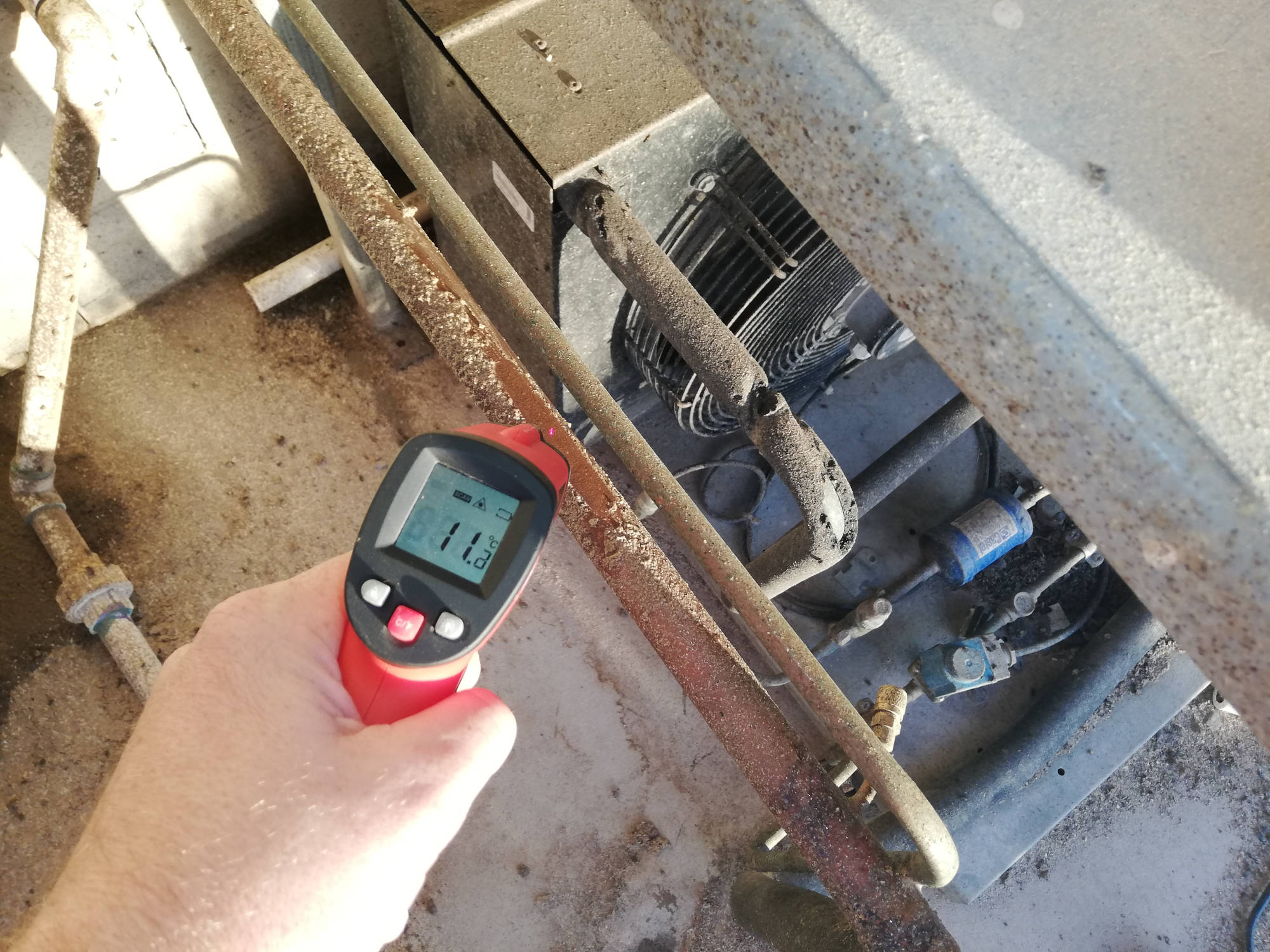
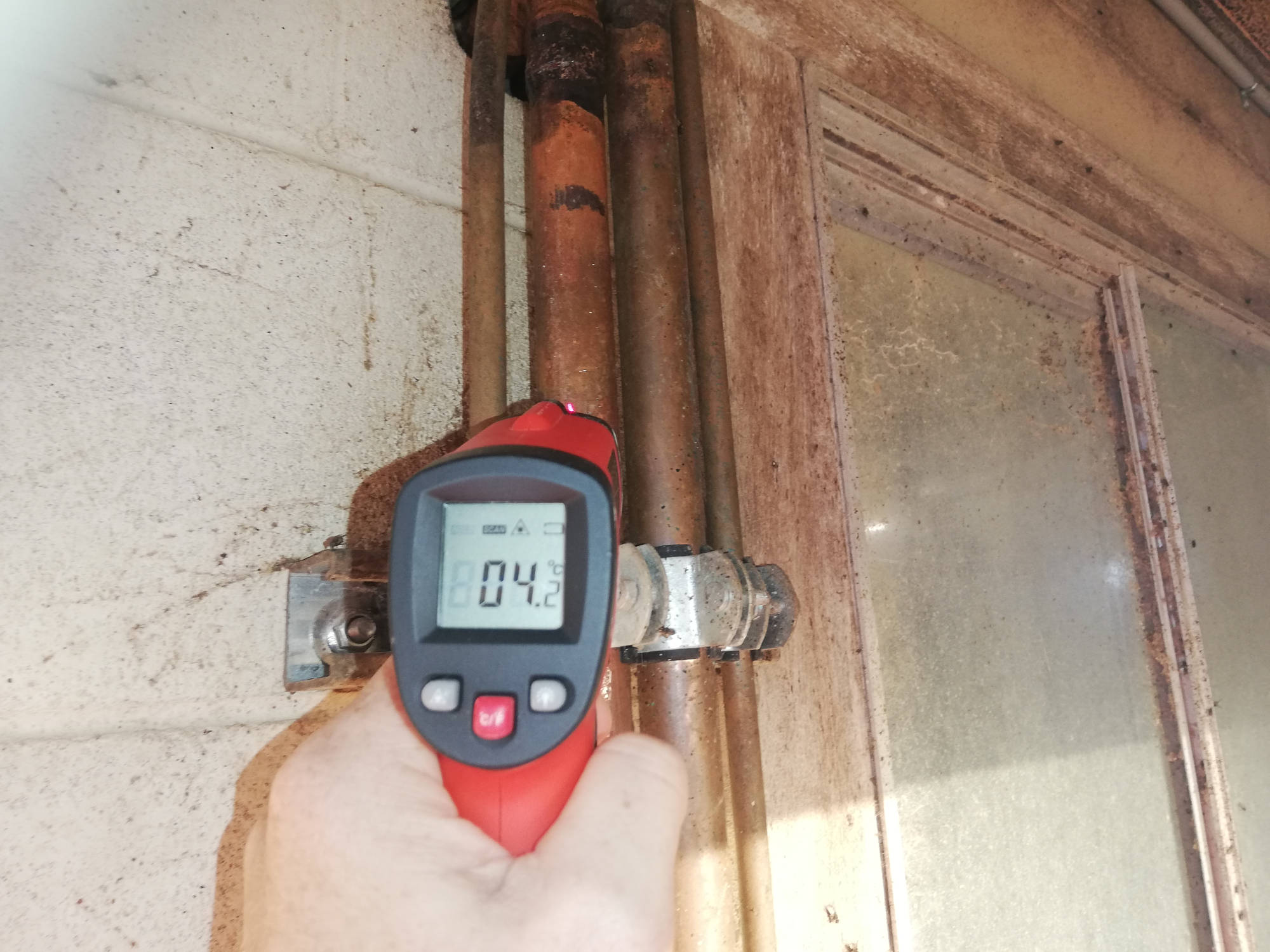
Uninsulated refrigerant pipe next to condensing fan absorbing heat (Pipe surface temperature shows 11 degrees down to 4 degrees two meters of pipe further from the hot air source, indicating the potential for heat gain of the refrigerant)
-
Pressure Issues:
This fault requires metering to detect, as pressure issues in refrigeration come in several forms that can be difficult to diagnose. A qualified technician should be engaged to install and monitor the equipment that can detect possible fault locations.
The pressure is used within the refrigeration system to change the refrigerant from liquid to a gas (or vice versa), which is vital for the cooling cycle. Examples of types of pressure faults that can occur are low pump-down pressure, high discharge pressure, low suction pressure, and blocked filters.

Reviewing a compressor on site as part of recurrent maintenance
-
Short Cycling and/or Unnecessary Starts:
This fault can require metering to detect. This can be seen through monitoring power consumption and reviewing the spikes in consumption. Pressure issues, refrigerant leakage, obstructions in the suction line, and other faults can cause this issue. Further investigation is required to find the cause of this issue and correct it. If this is not fixed, it results in excess wear and energy consumption.
-
Incorrect Superheat Setting:
This fault requires metering to detect. Superheat temperatures depend on the refrigerant and operation of the refrigeration unit.
If the superheat temperature is set too high, it will result in excess energy use and wear on the compressor. This fault can be caused by the insufficient refrigerant in the evaporator coil for the current heat load. So, if your refrigeration use has increased since its initial design, this should be checked and adjusted as required. This fault can also be caused by incorrect pressure, detectable by metering (as mentioned above).
Conversely, the superheat temperature can be too low which can mean it does not completely evaporate before entering the compressor. This results in excessive wear on the compressor.
-
Incorrect Condenser Unit Location:
As well as issues that arise during operation, there may also be issues that have been present since installation. One common example is incorrect condenser placement.
A condenser unit is responsible for rejecting heat. For this reason, it should be placed in a location with adequate airflow, preferably outside in a cool location. The ideal location for this unit is generally mounted at least 0.5 m (or half the width of the unit) from a wall. It is also important to ensure that the rejected heat is not contacting equipment that is supposed to remain cool (e.g. cool refrigeration pipework, or walls of the cold room).
As a simple rule of thumb, increasing the condensing temperature by 1°C results in an approximately 2-3% increase in power consumption and vice versa. Therefore, if the unit is placed in a location that allows for a lower ambient temperature and better airflow around the unit, the energy required will decrease.
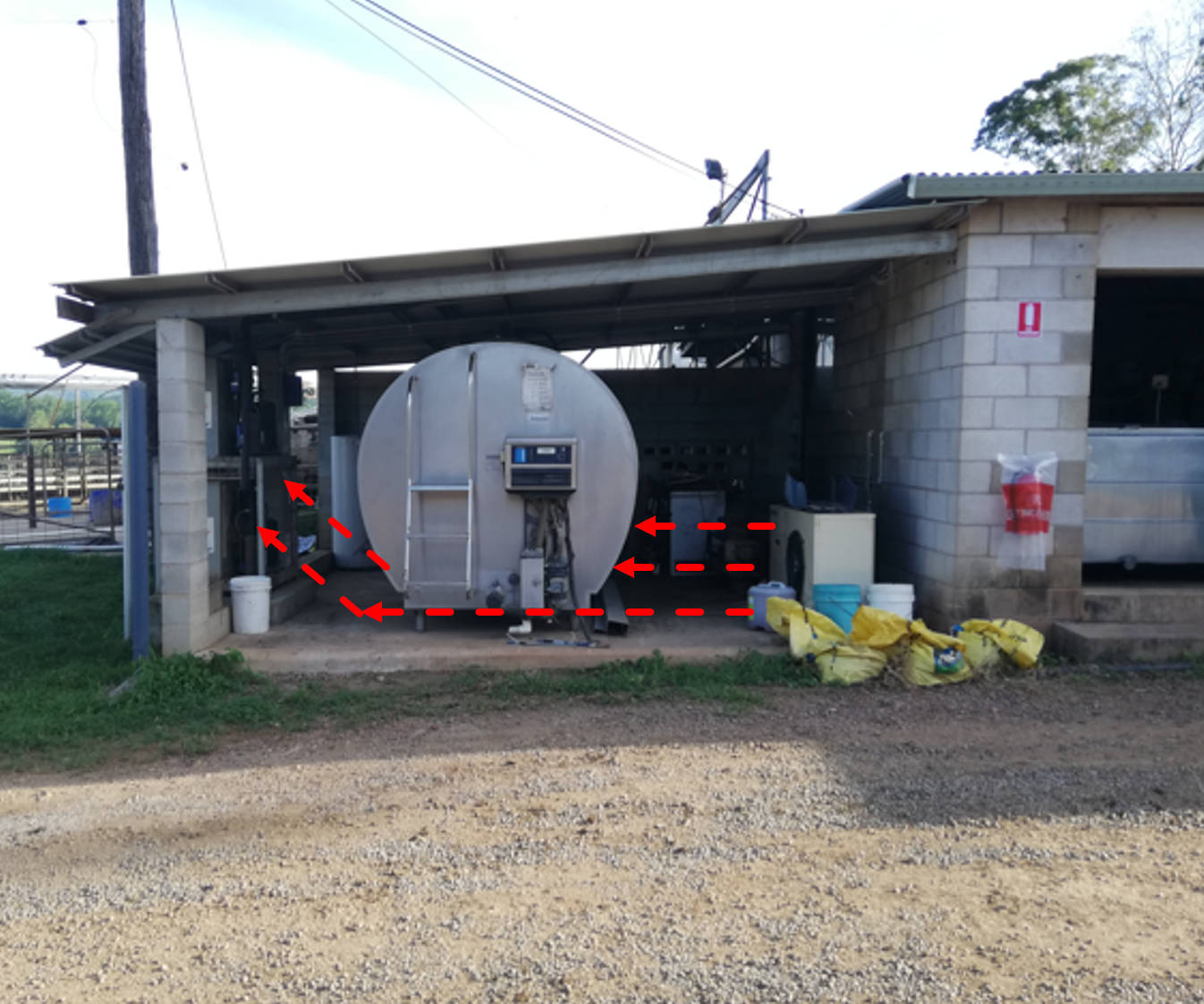
Hot air from a condensing unit going straight onto a refrigerated milk vat (creating a negative feedback loop)
-
Phase-out of refrigerants
In some cases, the unit needs to be changed or replaced. This is particularly important to consider if the system uses a gas that is currently or soon to be phased out. For more information on what refrigerants this includes, see the following links: https://tinyurl.com/R-22-Phase-Out and https://tinyurl.com/HCF-Phase-Down.
When to Retrofit
This is an option when: the system is still serviceable, only a short term plan is needed, or little capital is available. If a lack of capital is the only reason for considering retrofitting, there are options for funding and grants to support an upgrade. Please contact us!
When to Replace
This is recommended when a system: has already been retrofitted, is at its end of life, is degraded, will have increased load (site requires expansion or intended use changes).
If a system requires replacement, remember that buying cheap can be expensive! Lower upfront costs may mean more energy consumption (higher running costs), require more maintenance, have a shorter useful life, and/or have a greater risk of failure. There are options to fund projects through delivered energy savings, feel free to get in touch!
If a cold room or refrigeration system is a big part of your business, it is worthwhile checking these issues. If you believe your system suffers from faults that cannot be visually detected, there are several options for temporary or permanent smart metering. This will allow you to reduce running and maintenance costs, future proof against gas phase-outs, and allow your system to run more reliable with fewer breakdowns!
Conclusion
Recurrent maintenance of your systems generally pays for itself through energy savings. Smart metering also pays.
Want to get expert advice and benchmark the performance of your system or discuss any issues you are having? Looking to finance a best practice energy efficient upgrade? Get in touch today, we would love to have a chat